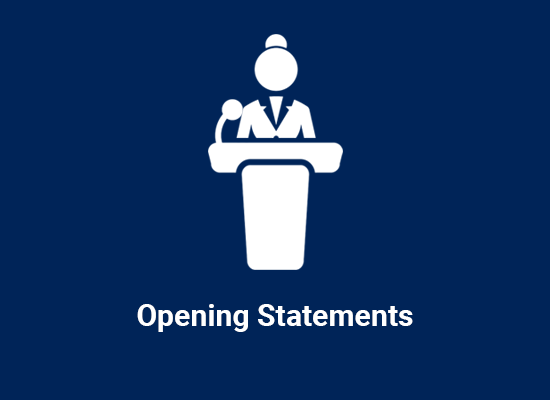 |
1. Opening Statements
When the trial begins, opening statements are made by both sides. In a criminal case, the State of Arizona is the plaintiff and is represented by an attorney from a government prosecution office. The prosecuting attorney speaks first. To begin, the attorney gives an overview of the facts to be presented, which is offered to help the judge or jurors understand and follow the evidence during the trial. The opposing attorney may present the same type of opening comment or may reserve the opening statement until later in the trial when that side of the case begins. Either attorney may choose not to give an opening statement. An opening statement is not an argument, and what the attorneys say in their opening statements is not evidence. |
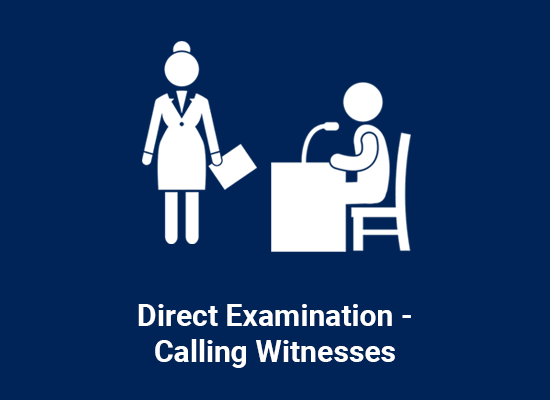 |
2. Direct Examination - Calling Witnesses
The prosecuting attorney will begin the case by calling witnesses and asking them questions. This is direct examination.
Witnesses in all trials take an oath or affirmation that what they say in court is true. Questions on direct examination and on cross-examination are asked by attorneys to arrive at the truth. The judge may also question the witnesses directly. Jurors may not question witnesses directly. Jurors may submit written questions for witnesses to the judge. |
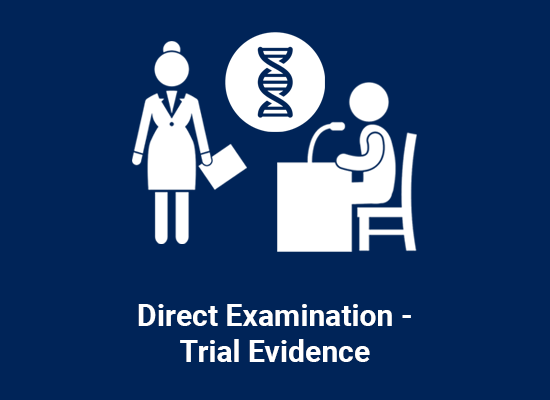 |
3. Direct Examination - Trial Evidence
All trial evidence, including testimony and physical evidence such as documents, weapons or articles of clothing, must be acceptable as defined by the Arizona Rules of Evidence before it can be admitted into evidence and shown to the jury. Occasionally, the attorneys for one side will object to a question asked or an exhibit offered by the other side. Under the law, attorneys are within their rights to object to the introduction of any evidence which they believe is improper. At times, the judge will hear arguments on these objections out of the hearing of the jury. The judge decides what evidence and testimony is admissible under the rules. Objections by the attorneys, or the ruling of the judge with regard to them, should not cause the jury to favor one side or the other.
In a criminal trial, the prosecuting attorney presents evidence and testimony of witnesses to try to prove the defendant committed the crime. The attorney for the defendant may present evidence and witnesses to show that the defendant did not commit the crime or to create a reasonable doubt as to the defendant’s guilt. The defendant is not required to present any evidence. The defendant is considered innocent of the crime charged until proven guilty. |
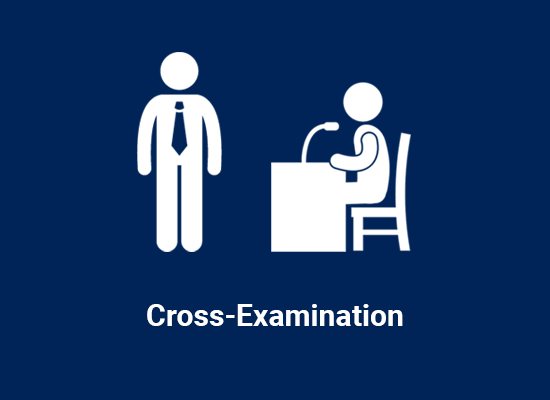 |
4. Cross-Examination
When the prosecution’s side has completed its questioning of a witness, the defense is allowed to cross-examine the witness on any relevant matter. |
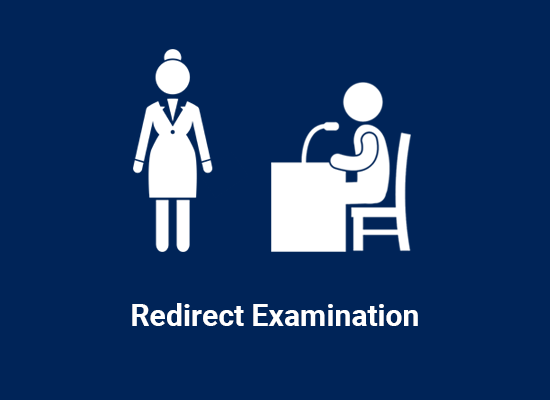 |
5. Redirect Examination
After cross-examination, the attorney who originally called the witness may ask additional questions of the witness to clarify something touched on in the cross-examination. This is redirect examination. The judge may allow an opportunity for the opposing attorney to recross examine.
When the prosecution has called all the witnesses for its side of the case and presented all its evidence, that side rests its case. |
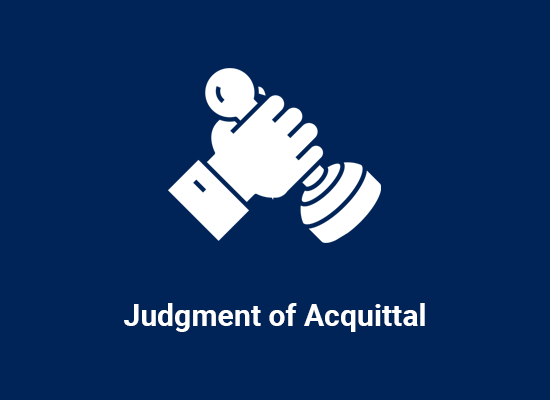 |
6. Judgment of Acquittal
After the prosecution rests, the defendant’s attorney may ask the court to decide the case in the defendant’s favor because the prosecuting attorney did not present sufficient evidence to prove the case against the defendant. This is called a judgment of acquittal in a criminal case.
If the judge agrees that there is not enough evidence to convict the defendant, the judge rules in favor of the defendant and the case ends. |
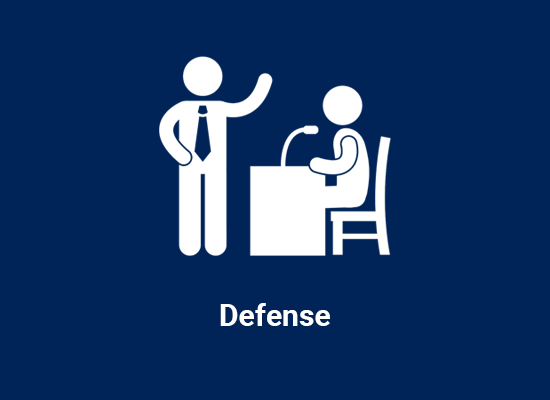 |
7. Defense
If a judgment of acquittal is not requested, or if the request is denied, the defense may present evidence for its side of the case. The attorney for the defense often waits until this point in the trial to make an opening statement.
The defense may choose not to present evidence, as it is not required to do so. Remember, the defendant in a criminal case is not required to prove innocence. The prosecution is required to prove the defendant’s guilt beyond a reasonable doubt.
If the defense does present a case and call witnesses, the same rules and procedures that governed presentation of evidence by the prosecution now apply to evidence presented by the defense.
At the conclusion of the defendant’s case, the prosecutor may present additional information to respond to evidence offered by the defense. Following this, the defense is given another opportunity to present additional evidence on the defendant’s behalf. |
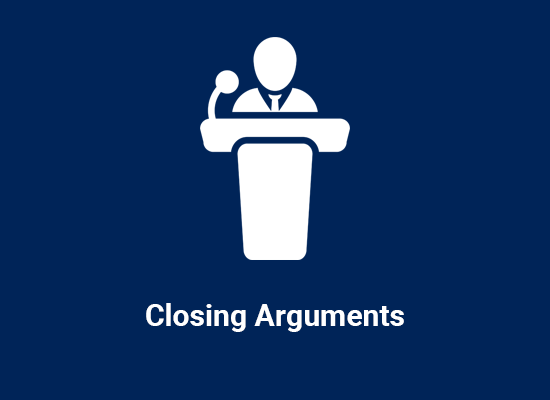 |
8. Closing Arguments
When both sides have presented their evidence, each side may make closing arguments. Closing arguments are similar to opening statements. They provide an opportunity for the attorneys to address the judge or jury a final time. The plaintiff/prosecutor speaks first, usually summarizing the evidence that has been presented, and highlighting items most beneficial to the prosecution. The attorney for the defendant speaks next. The defense attorney will usually summarize the strongest points of the defendant’s case and point out flaws in the case presented by the prosecutor. The prosecutor then has one last opportunity to speak. These arguments give the judge or jury an opportunity to better understand the case and thus help them in arriving at a verdict. What the attorneys say in their closing arguments is not evidence. |
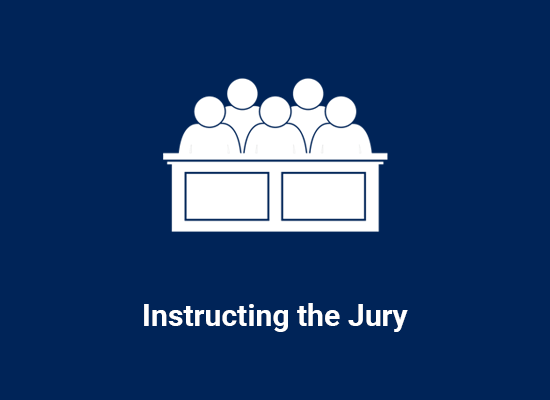 |
9. Instructing the Jury
After closing arguments in a jury trial, the judge reads instructions to the jurors explaining the law that applies to the case. Jury members are required to follow and apply these instructions in reaching a verdict. |
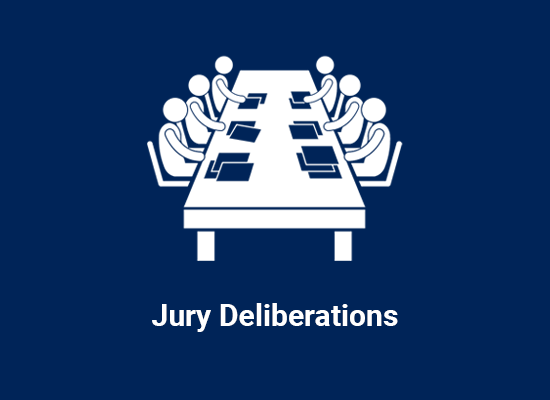 |
10. Jury Deliberations
Bailiffs are then sworn to take charge of the jury and escort them from the courtroom to the jury deliberating room. The jury elects a foreperson to lead the discussion. Jurors must consider all the evidence, review the facts of the case, and reach a verdict based upon the law and evidence. When the jury makes its decision, the court is called back into session. |
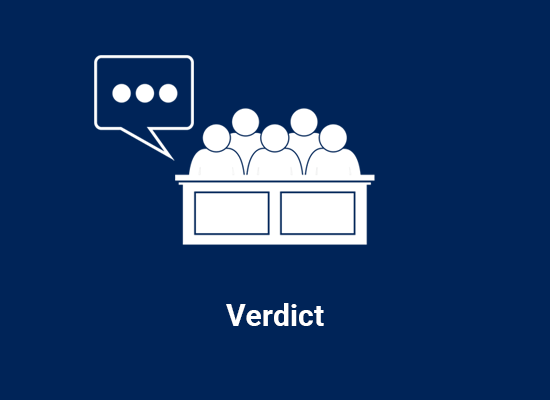 |
11. Verdict
The verdict must be unanimous and is signed only by the foreperson. The foreperson presents the written verdict to the judge, and either the judge or court clerk reads the jury’s verdict to the court. The court then enters a judgment based on the verdict, and the jury is released from duty.
If found not guilty, the defendant in a criminal case is released immediately. If the defendant is found guilty, a date is set for sentencing. |
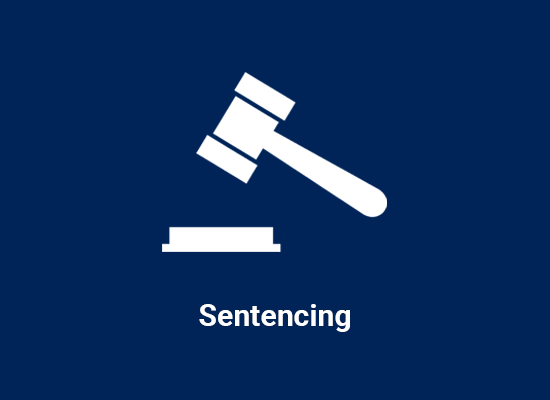 |
12. Sentencing
A sentencing hearing is scheduled to determine the punishment a convicted defendant will receive. The judge hears testimony from the prosecution and the defense regarding the punishment that each side feels the convicted defendant should receive.
In Arizona, the Legislature has established a range of sentences for different crimes, and the judge must impose a sentence within the range outlined by law. The options may include probation, fines, imprisonment or a combination of these punishments. In some cases, the death penalty can be imposed. |
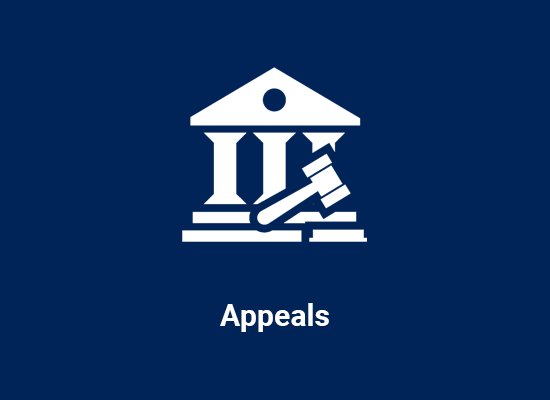 |
13. Appeals
A convicted defendant may appeal. In a case where the death penalty is imposed, an automatic appeal is filed with the Supreme Court. In all other criminal cases, the appeal goes to the court of appeals. |